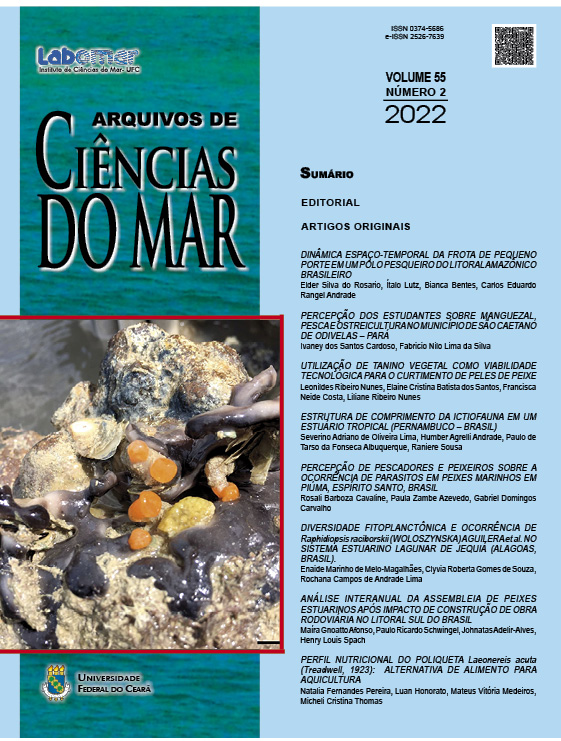MOLECULAR IDENTIFICATION OF SHARK MEAT TRADED AS CAÇÃO IN SOUTHWESTERN STATE OF SÃO PAULO, BRAZIL
Identificação molecular de carne de tubarão vendida como cação no sudoeste do Estado de São Paulo, Brasil
DOI:
https://doi.org/10.32360/acmar.v55i2.62544Resumen
The meat of sharks and rays is commonly traded in Brazil under the generic name of cação. This compromises the monitoring of which species are being traded. In the present study, molecular marker techniques were applied to the species-level identification of elasmobranch meat traded in the southwest of the State of São Paulo. A total of 15 meats purchased in 2019 were partially sequenced (up to 655 base pairs) for the mitochondrial cytochrome c oxidase subunit I (COI) gene. Of these meats, 14 were from Blue Shark,
Prionace glauca, and one from Shortfin Mako Shark, Isurus oxyrinchus. Only two (13,3%) out of the 15 cação meat were species identified on its product label – the other meat was only labeled as cação. Both shark meat that had the scientific name stated on the package label correctly corresponded to the species identification obtained through DNA sequencing. It is suggested that similar studies be conducted in other non-coastal regions of the country to further understanding of the cação trade in locations where elasmobranch consumption is not habitual. The present study was the first to detect the Shortfin Mako Shark sold as
cação in Brazil.
Keywords: DNA Barcoding, elasmobranch, molecular marker, conservation
Descargas
Publicado
Número
Sección
Licencia
1. Proposta de Política para Periódicos de Acesso Livre
Autores que publicam nesta revista concordam com os seguintes termos:
- Autores mantém os direitos autorais e concedem à revista o direito de primeira publicação, com o trabalho simultaneamente licenciado sob a Licença Creative Commons Attribution que permite o compartilhamento do trabalho com reconhecimento da autoria e publicação inicial nesta revista.
- Autores têm autorização para assumir contratos adicionais separadamente, para distribuição não-exclusiva da versão do trabalho publicada nesta revista (ex.: publicar em repositório institucional ou como capítulo de livro), com reconhecimento de autoria e publicação inicial nesta revista.
- Autores têm permissão e são estimulados a publicar e distribuir seu trabalho online (ex.: em repositórios institucionais ou na sua página pessoal) a qualquer ponto antes ou durante o processo editorial, já que isso pode gerar alterações produtivas, bem como aumentar o impacto e a citação do trabalho publicado (Veja O Efeito do Acesso Livre).

